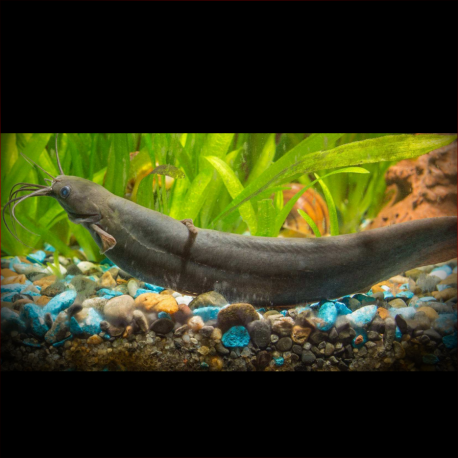More info
Datasheet
| Minimum Tank Size | 243 litres / 64.19 US gallons |
| Maximum Size | 30.0cm / 11.81inches |
| Temperature | 21°C / 69.80°F - 25°C / 77.00°F |
| Hardness | 5-30ºdH |
| pH | 6.0-8.0 |
General Description
The Liver Catfish, scientifically known as Heteropneustes fossilis, is also referred to as the stinging or fossil catfish due to its venomous nature. This hardy species has the ability to survive for over 20 years under proper care and can adapt to hostile conditions by breathing atmospheric air to some extent. With an elongated air sac connected to its gill chamber to facilitate air breathing, mucous secretion to prevent skin drying, and gill sealing capabilities, it can survive out of water briefly.
Aquarium Setup
The Liver Catfish thrives in a dimly-lit aquarium with ample hiding spots and open swimming spaces. Optimal tank furnishings include smooth rocks, driftwood, and plastic piping. Due to its tendency to escape by crossing dry land, a secure tank cover is essential. Efficient filtration is crucial as this species generates significant waste. For specific water conditions, a water hardness of 5-30°dH, pH range of 6.0-8.0, and a temperature between 21-25°C are recommended (see table).
Behaviour
This catfish species exhibits peaceful behavior towards similarly sized or larger, active tankmates, especially those that occupy different tank zones like larger characins or cyprinids. It may become problematic with slower or benthic fish due to its nocturnal activity. Surprisingly, the Liver Catfish is gregarious and thrives best in small groups.
Feeding and Diet
Feeding the Liver Catfish is not challenging as it readily accepts sinking dried, live, and frozen foods. A diet rich in meaty fare such as earthworms, bloodworms, and chopped prawns is beneficial. Once acclimated, many specimens will surface to feed.
Reproduction & Dimorphism
Limited information is available regarding the breeding habits of the Liver Catfish. It is said to be a substrate-spawner, with both parents guarding and caring for the offspring. In some regions, this species is commercially bred for food using natural or artificial methods. Mature females are typically rounder-bodied compared to males.
Habitat and Distribution
In the wild, the Liver Catfish is commonly found in oxygen-deficient swamps, ditches, and ponds, occasionally venturing into rivers and brackish waters. Its natural range spans regions of Iran, Pakistan, India, Nepal, Sri Lanka, Bangladesh, Myanmar, and the Andaman Islands.

